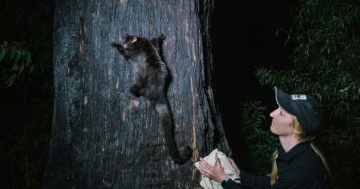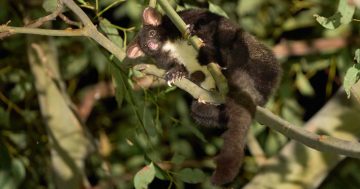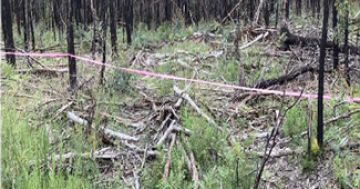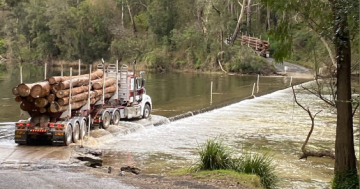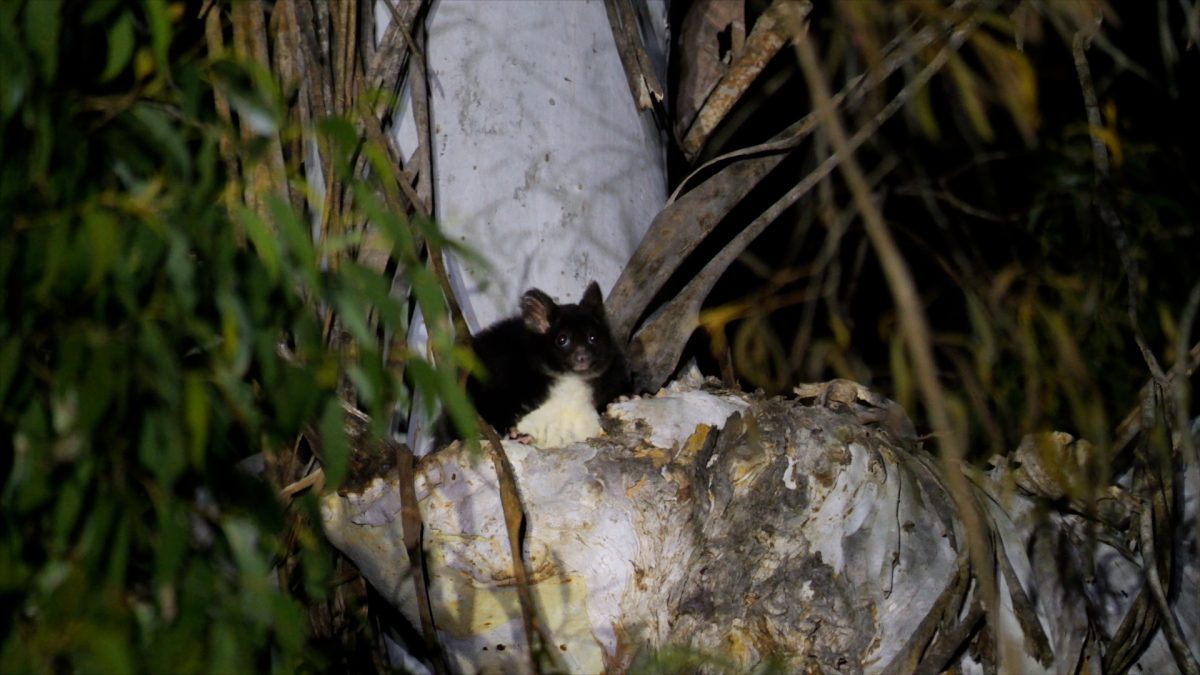
This greater glider was filmed in one of the den trees identified by conservationists. Photo: WWF-Australia.
Activists have called for urgent reforms after 89 endangered greater gliders and 20 habitat trees were found in areas of a forest that had been earmarked for logging.
A stop work order was extended in parts of the Tallaganda State Forest by the NSW Environment Protection Authority (EPA) this month after initially being brought in following the discovery of a dead endangered glider.
After the announcement, the World Wide Fund for Nature-Australia (WWF), Wilderness Australia and South East Forest Rescue claimed they had surveyed three hectares of the state forest in about three hours and found 17 greater glider den trees.
“Finding 17 den trees in a short space of time exposes a massive failure by Forestry Corp,” WWF-Australia’s threatened species and climate adaptation ecologist Dr Kita Ashman said.
“Our surveys highlight that we can have zero confidence in Forestry Corp to identify and protect crucial threatened species habitat.
“It shows we need stronger nature laws and urgent reforms to remove exemptions such as Regional Forestry Agreements that allow native forest logging to continue unchecked.”

WWF-Australia partnered with The University of Sydney to deploy GPS collars on greater gliders. Photo: WWF-Australia.
The conservation groups claim the survey results indicate there would have been about 10,000 greater glider den trees before logging began.
“The Tallaganda population is extremely important but it could be wiped out if habitat destruction continues,” Wilderness Australia’s operations manager Andrew Wong said.
“We ask the Minns Government to swiftly bring about the permanent protection of all of Tallaganda State Forest, along with all other critical habitat required to prevent the extinction of the iconic greater glider.”
A Forestry Corporation of NSW spokesperson said since the initial stop work order was issued, the corporation had worked with the EPA to address the concerns raised around searching for greater glider den trees.
“In planning the operation, Forestry Corporation searched for hollow-bearing trees and marked 5400 for protection,” the spokesperson said.
“Forest ecology teams have conducted searches for greater gliders and den trees using thermal drones and this data has been shared with the EPA.
“Forestry Corporation will continue working with the EPA to address their concerns around den trees as well as support the local harvesting contractors, who have been stood down from work during this time.”
The logging in parts of the state forest, which sits beside Tallaganda National Park and is about 60 km southeast of Canberra, was originally ordered to stop in August after an inspection of several active logging compartments found a dead southern greater glider around 50 metres from forestry harvest operations.
The greater glider is endangered in NSW and is the largest gliding possum in eastern Australia.
On Friday (6 October), the EPA said it had extended the stop work order until 13 November to cease harvesting by Forestry Corporation in parts of the state forest.
Greater gliders shelter in multiple tree cavities, known as ”den trees”.

Dr Kita Ashman in the Tallaganda State Forest. Photo: WWF-Australia.
Since the first order in August, the EPA recorded 89 greater gliders and 20 den trees in areas subject to the order.
The EPA said those areas had been earmarked for harvesting or planned harvesting operations.
“Given the high number of southern greater gliders identified by the EPA at this point in the investigation, we have extended the stop work order for an additional 40 days,” the EPA’s acting executive director of operations Steve Orr said.
“Native forests, including habitat for the southern greater gliders, are still recovering from the impacts of the fires but their presence in high numbers suggests that parts of Tallaganda State Forest are providing important refuge.”
The EPA also said it was still not known how the glider found in August had died and that its investigation at the site was ongoing.






